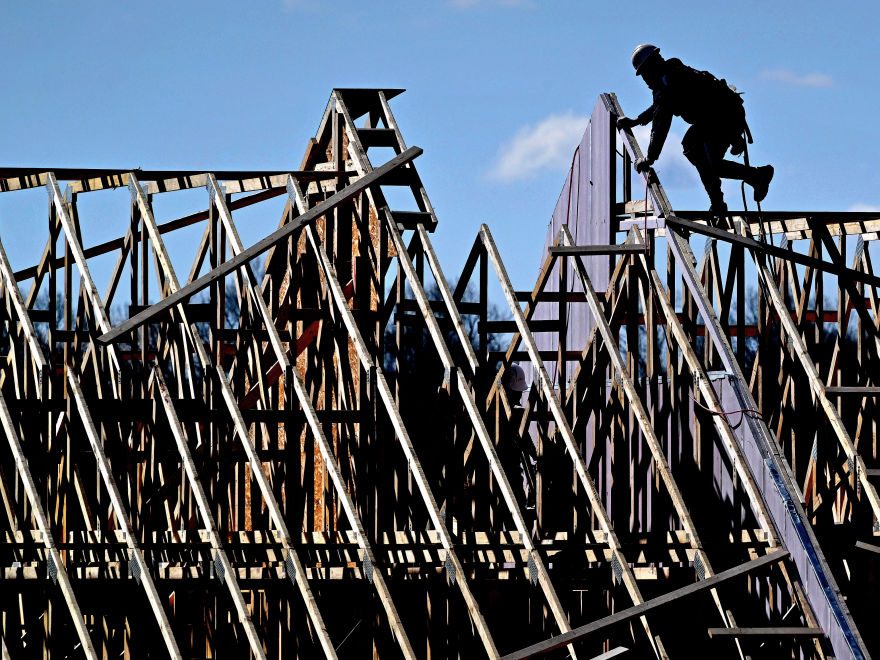Zoning reform is the key to solving Montgomery County’s housing crisis and to addressing the need for a more diverse array of housing styles and increasing housing production, officials said during Friday’s Affordable Housing Conference of Montgomery County in Rockville.
“We have to get out of this dynamic of affordable housing versus market-rate housing. We need housing for everybody. We need housing at every level of affordability,” County Council President Andrew Friedson (D-Dist. 1) said during a panel discussion on zoning reform at the conference held at the Bethesda North Marriott Hotel & Conference Center.
The Affordable Housing Conference of Montgomery County is a nonprofit organization focused on bringing together elected officials, housing and community development leaders, business professionals, activists and planners to discuss affordable housing solutions in the county, according to its website. The nonprofit’s annual conference on Friday featured a keynote address by Adrianne Todman, acting secretary of the U.S. Department of Housing and Urban Development (HUD).
During the panel discussion on zoning, Friedson noted that recent data from the Montgomery County Planning Department “screams off the page” that the county does not have enough housing.
Montgomery Planning Director Jason Sartori presented data that showed in 2023, the average sales price for a detached single-family home was $970,000 in 2023 compared to $440,000 for attached structures in the county.
Sartori also explained that the average size of homes has increased in the past eight decades. According to Montgomery Planning data, the average gross floor area of homes built from 2020-2023 is 3,867 square feet. But, as new homes in Montgomery County are getting bigger, household size has decreased from about 3.7 people per household in 1960 to 2.7 people per household in 2022.
Sartori said the planning department and Planning Board are focusing on:
- Increasing opportunities to meet the county’s diverse housing supply needs, such as duplexes and triplexes;
- Efforts to “unravel the exclusionary aspects” and impacts of single-family zones; and
- Creating more opportunities for home ownership in more parts of the county.
During the panel session, Friedson and council Vice President Kate Stewart (Dist. 4) also discussed how the council is embracing and supporting zoning reforms to address the county’s housing crisis.
Stewart said zoning reform is at the “heart” of the county’s housing crisis and highlighted the council’s recent passage of a zoning text amendment bill, ZTA 24-01, also known as the Facilitating Affordable, Inclusive, Transformational Housing (FAITH) ZTA.
FAITH ZTA is a zoning reform sponsored by Stewart and Friedson that makes it “less cumbersome and burdensome for houses of worship to build affordable housing,” Stewart said.
According to Stewart, some houses of worship had unused extra land or buildings constructed “decades ago when their congregations were much larger.” They wanted to build housing on their properties but ran into barriers resulting from the county’s zoning laws, which favor single-family detached homes.
“They looked and said, ‘Well, we don’t want to build single-family detached homes, that’s not going to help advance the goal of affordable housing or help the people in our community we want to.’ And lots of them just stopped right there,” Stewart said.
With the amendment’s passage in April, qualifying institutions, such as houses of worship, can now build multi-unit living spaces on their land.
The next step, Stewart said, is to have good partnerships between the houses of worship, the county’s nonprofits, developers, and activists to make sure the proposed housing gets built.
“We also know there are going to be people who aren’t going to want these projects to move forward,” Stewart said. “There is going to be opposition and we’re going to have to come together to help the congregations to help them move forward to support them and to listen to them on what they need.”
Moving forward, Friedson says the county needs to think about housing as part of the public infrastructure.
“If we don’t have enough housing, it has devastating impacts on every aspect of our life–economically, environmentally, from an equity standpoint,” Friedson said. “We have to address that through zoning.”
One of the conference’s featured speakers was Acting U.S. Department of Housing and Urban Development (HUD) Secretary Adrianne Todman, who told attendees that it “takes a village” to achieve the county’s and the nation’s housing goals.
“Montgomery County, like many other counties across the country, is going through something as it relates to, there’s not as much supply for demand,” Todman later told MoCo360. “So there may be a number of people who want to buy their first home or a number of people who want to rent their first apartment but they’re unable to find something that is affordable to them.”
While there is a lot of wealth within the county, there are still families and individuals who are making lower incomes and may not make enough money to live in the county where they work, she noted.
Todman said it is critical to provide affordable housing options because county leaders “want the county to remain economically secure.”
“The only way we found that that can really happen is when families have places that are affordable to them to live so the county itself can be healthy,” she said.
Todman noted that zoning reform can be a “tough issue.” While zoning is a “very localized action,” on the national level, HUD is working to incentivize reducing barriers to building affordable housing through its PRO (Pathways to Removing Obstacles) Housing program. The program will deploy $85 million for grant funding that will go to a handful of state, county, city, or township governments, planning organizations and multijurisdictional entities to support communities that are taking steps to remove barriers to affordable housing. Todman said the funding recipients will be announced later this Spring.
Todman also recognized that the county has approached its affordable housing crisis in innovative ways, such as the Housing Opportunities Commission’s development efforts involving public funds to build a publicly owned housing complex that is affordable for the long term.
The county “has always been on the frontier of inclusionary zoning and setting aside residential units for people who make lower income,” Todman said.



